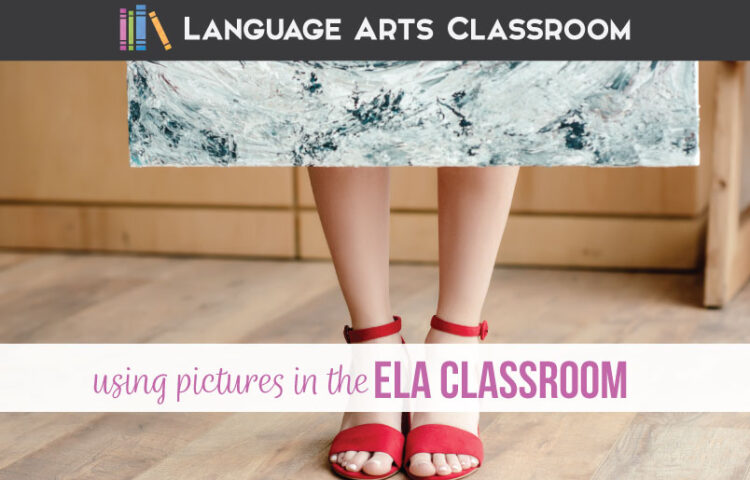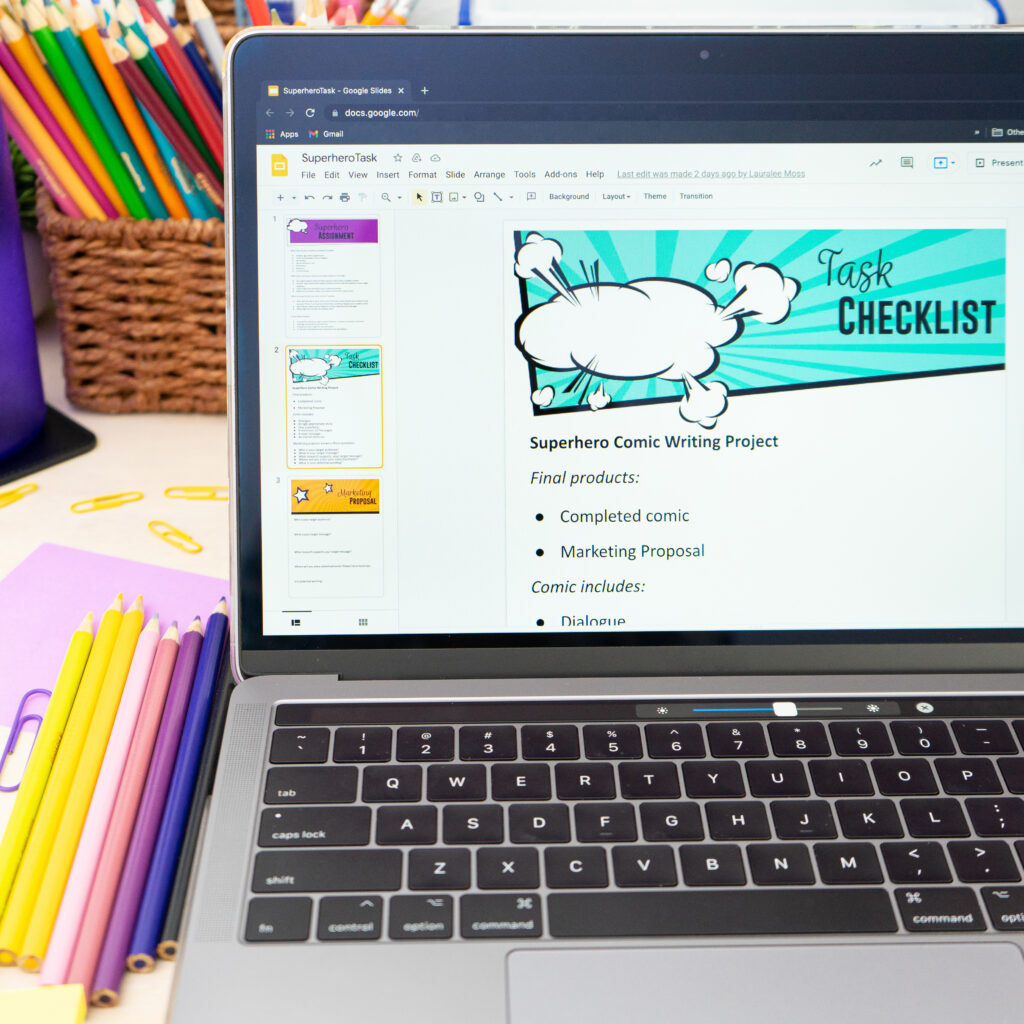Using pictures in the classroom builds creativity and is a fun addition to many ELA lessons.
Years ago, I purchased a bundle of old pictures from a flea market. It was a bag of black and white pictures from the early 1900s. I didn’t know the people, and I really wasn’t sure how I would use those pictures. I’d never seen such interesting pictures of families, babies, and weddings. I felt like I was holding a time capsule.
It was a great purchase. Those pictures inspired hundreds of creative writing students.
Since those pictures worked so well, I began experimenting with other pictures in other areas of my classroom. Now that so much of my language arts activities are digital, I have more options with pictures.
For years, I have worked to increase my purposeful use of art in language arts. I began using pictures in literary analysis and grammar lessons with success. Soon, I added pictures as an option with vocabulary and literature extension activities. My students responded well, so I continued sneaking in the pictures.
Here are ten ways for using pictures in the classroom.

- Complete a challenge. Ask students to find the perfect picture for a concept, a picture that encompasses whatever you are studying. If you are working on essential questions with literature, ask students to find a picture that stresses the idea of their interpretation of the essential question. Ask students to show the picture and explain their understanding, and watch discussions bloom from everyone’s different interpretations.
- Research a location. Students across the world use Google Earth, and most literature has a setting that can be researched. Map a character’s movement or a family’s location.
- Describe vocabulary. When we study vocabulary, my students and I bring out images and cartoons. We make goofy captions and quotes to practice the words in context. Sometimes when we study vocabulary words from older literature, I pull up images from that time period. The vocabulary words make more sense in that context. (For instance, I pull up images of the Great Depression or the Dust Bowl during Of Mice and Men lessons.)
- Create an ad. I’m always considering media literacy with my students! Students could choose any product and then find an image that will advertise that product. Ask them to write copy or make a video that incorporates the image and product. Another favorite: Have students make a classroom library advertisement to increase engagement.
- Narrate. What light and mood would a student take their selfie? A selfie would be an interesting introduction to a personal narrative. Inspire students with pictures for building a story’s setting or character. Pictures support students as they naturally introduce settings and characters in their narratives. Sometimes, students use an abundance of direct statements to establish a story’s elements rather than slowly building the concepts.
- Analyze a character. Accessing a reservoir of pictures will stir student imaginations as they study characters in literature. I’m interested to see if students combine multiple pictures to create a timeline of a character. Could they find images of a character from childhood? What about the character’s future?
- Play with grammar. (Oh yes! I found a way to include grammar.) As I scrolled through the “movement” photos, I immediately imagined students acting out verbs. Then, I knew that students could exaggerate their facial expressions for interjections. The story told in a photo can lead to a lesson on adjectives.
- Point of view. Understanding point of view in literature or life is a challenge. Students can practice by looking at the portraits on Pinterest or from historical documents. Why does each student have a different image to support the point of view of a story? In what ways does this experiment emphasize the diversity of points of view?
- Daily writing prompts. Do you start your class with daily writing prompts? If so, switch a writing prompt out with an image. See what students unravel and move your lessons that way.
- Brainstorm essays. The challenges have pictures divided into categories, and as I scrolled through them, I saw the inspiration for essays. For example, the “perspectives” challenge inspired perspectives of nature, humans, decay, books, and more. Students can be inspired by other teens who understand them.
You probably have used picture books with older students for a variety of reasons. Basically, you will take the excitement and fun of picture books and flip them into other activities aside from reading. Since older students respond well to pictures, try adding them into new areas.
Using pictures in the classroom for creative writing, grammar, vocabulary, and more. Physical and digital pictures can expand students’ understanding of concepts across the ELA curriculum.


